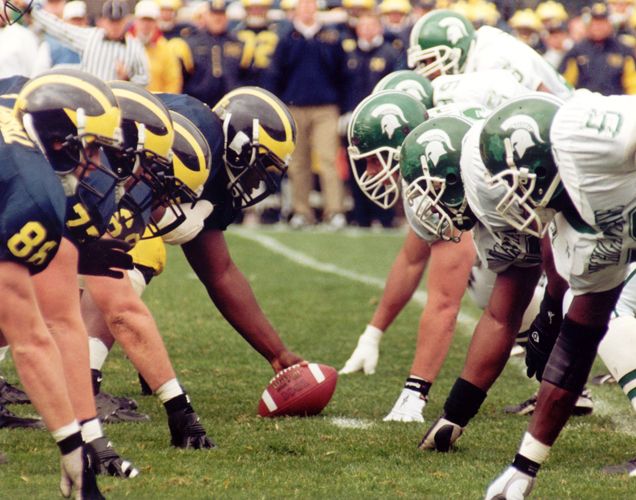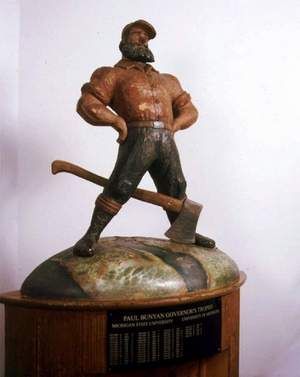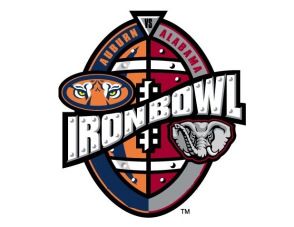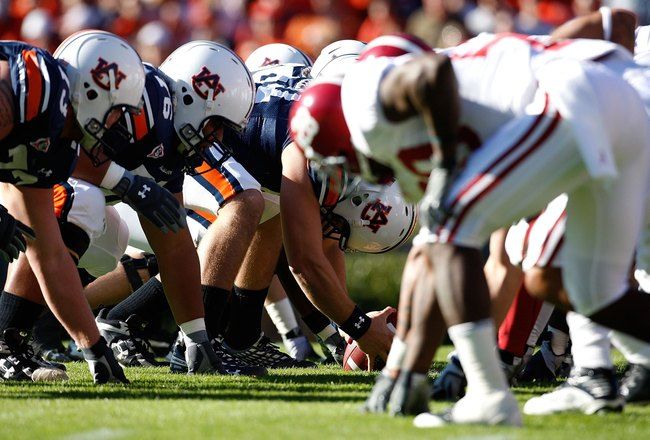 |
| The Michigan Wolverines and Michigan State Spartans lock horns every year in this popular rivalry. |
The Wolverines and Spartans play yearly for the Paul Bunyan Trophy. Paul Bunyan, the imaginary lumberjack, seemed like the perfect person to represent this rivalry's trophy with Michigan being a major lumber producing state. However the Paul Bunyan Trophy was presented into the rivalry until 1953.
The first meeting between these two teams was on October 12, 1898. In this meeting, Michigan won with a final score of 39-0. Overall (pre-Paul Bunyan Trophy as well as post-trophy), the teams have met a total of 105 times with Michigan leading the rivalry 68-32-5 (although they only lead the series post-trophy 35-23-3).
Michigan owns the largest margin of victory record in the rivalry, with a 49-3 victory in 2002, and a ridiculous 119-0 score in 1902 before the Paul Bunyan Trophy was presented.
Through 1957 the Wolverines had the home field advantage in the rivalry most of the time, hosting the rivalry game 44 times in Ann Arbor and only traveling to East Lansing six times.
From 1950-1969 the Spartans had a good grasp on the rivalry as they had a winning record of 14-4-2. However in 1969 the Wolverines hired Bo Schembechler as their new head coach. After his hiring, from 1970-2007 Michigan went 30-8 against their rival.
 |
| The Paul Bunyan Trophy was first presented into this rivalry in 1953. |
In 2004 the Wolverines and Spartans battled to triple overtime, which was the first time there had ever been a triple overtime game in Michigan Stadium. Michigan went on to win the game 45-37.
After winning their sixth straight victory over the Spartans, Michigan's running back Mike Hart referred to Michigan State as "little brother". After Hart said that, the Spartans defeated the Wolverines in four straight meetings with Michigan finally breaking the four game winning streak this past year in Ann Arbor.
This rivalry has not only seen some legendary players on the field, but it's also seen legendary coaches. It is a yearly game, which is obviously an in-state rivalry. It is a rivalry that should be played for years to come. It's a rivalry that has given us many great football memories, and will surely give us many more to come. If you are from or live in Michigan, odds are you either bleed maize and blue or you bleed green. Either way, you'll look forward to that Saturday when the Wolverines and Spartans lock horns.
The next matchup between the Wolverines and Spartans will be October 20, 2013. Surely it will be televised, and Michigan State will be looking to win the Paul Bunyan Trophy and lock it up in East Lansing.
- Matt Lytle
@mattlytle

